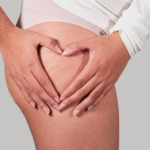How to Remove Sun Burn Marks on Face: A Helpful Guide

A sunburn on the face often starts with redness and tenderness. When it heals, it can leave stubborn marks that disrupt your skin tone. Many people feel frustrated when they see spots or patchy areas that just will not fade. Caring for a sunburn is about more than beauty. It is also about keeping skin healthy and strong. Early treatment helps lighten these marks and prevents more damage from happening in the future. At our clinic, we offer tips and solutions for anyone who wants clearer, happier skin. In the following sections, we will discuss the causes of sunburn marks and share both home and professional options for better results.
How to Remove Sun Burn Marks on Face: Key Insights
Many sunburn marks appear because the skin undergoes stress when exposed to strong rays. The face, which is usually uncovered, gets lots of direct sunlight. Sensitive facial skin can react to UV rays by producing extra pigment. That pigment becomes visible as darker patches or spots. These spots can persist if not addressed.
Common Reasons for Sunburn Marks
The sun’s radiation breaks down collagen and can cause inflammation. If you do not shield your face or treat burns quickly, the resulting pigmentation may linger. Your skin’s natural ability to bounce back might slow if it is often exposed to harsh conditions. Sometimes, inadequate moisture or harsh cleansers make things worse.
Keeping the skin barrier intact is crucial. Hydration and gentle cleansers help prevent more irritation. If you notice peeling, resist the urge to pick at flaking spots. That can deepen the marks and create scabs. Prioritizing early treatment often leads to better outcomes and fewer spots that refuse to fade.
Peeling and Redness
Peeling shows that the injured upper layer is shedding to reveal fresh skin. This process can leave uneven color behind if the skin underneath has produced excess pigment. Redness is also a sign of stress. It may soften over time, but too much peeling can intensify darkness, especially around delicate areas.
An easy way to help fade is to increase moisture levels. Mild lotions or gels made for post-sunburn care can reduce tightness. Some people add cool compresses to calm the area. Others use soothing mists that restore relief. Sunburn can feel uncomfortable, but with the right attention, healing skin often looks smoother.
Role of Early Care
Early care can prevent deeper marks from appearing. The first two days after noticing a burn are vital. Gentle washing, light moisturizing, and avoidance of direct rays are some quick changes that protect new skin. This kind of attention can minimize lingering blotches, saving you the trouble of intense treatments later.
You might see quick improvements if you rest your skin with cool packs and mild gels. A tender face needs a break from makeup or heavy products during the healing window. The more care you invest right after a burn, the less chance you have of dealing with stubborn marks tomorrow.
As you move forward, remember to track changes. If you notice certain areas staying darker, consider seeking advice. A dermatologist can guide you on the next steps to erase leftover marks. Gentle sunscreen also remains a must. Later sections will detail sunburn degrees and more strategies for a clear complexion.
Skin Cancer and Sun Exposure: Why It Matters
Many people worry about wrinkles or splotches, but there is a larger concern behind frequent sunburns. The skin is the body’s largest organ, and it can only handle so much UV damage. Repeated exposure to intense sunlight puts you at risk for skin cancer. This risk goes up with every bad burn.
How Excessive Sun Exposure Harms Skin
Ultra Violet rays can alter cells. When damage happens repeatedly, cells may divide abnormally. This can start a chain reaction that might lead to cancerous growth. Frequent peeling or deep sunburn lines can be warning signs. Annual skin checks help detect suspicious moles or lesions, catching them before they spread.
Protecting your face means using sunscreen with at least SPF 30. Even if it is cloudy, harmful rays can still pass through. You can also wear wide-brimmed hats that shield the forehead, cheeks, and chin. Simple steps go a long way. When you minimize UV damage, you boost your odds of healthier skin.

Early Detection and Simple Checks
Dermatologists often recommend the “ABCDE” rule for moles, which looks at Asymmetry, Border, Color, Diameter, and Evolving shape. Spot changes can mean it is time to see a specialist. Sunburn marks may seem harmless, but piling up damage can set the stage for potential issues that require serious medical attention.
Keep an eye on how your face reacts after a fun day out. If you find that burns heal slower or come back often, you might need to adjust your habits. Wearing protective clothing, seeking shade, and choosing water-resistant sunscreen are easy practices that have made a noticeable difference over the years.
The Hidden Costs of Unchecked Sunburn
It is easy to dismiss mild redness, but ignoring it can accelerate aging. Fine lines sneak in sooner than you expect. Dark marks might multiply, creating a patchy complexion that is tough to fix. Worst of all, persistent damage raises your odds of encountering more threatening skin problems down the road.
Consistency is essential. A single weekend of intense sun can wreak havoc on the skin. By maintaining a regular protective routine, you preserve your collagen and elasticity. This helps keep your face looking healthier. You also reduce the discomfort of dealing with peeling, burning sensations, or aches after a long day outdoors.
If you see unusual spots, do not panic. Many marks turn out to be noncancerous. However, only a proper check can confirm that. Early action is always smarter than waiting. Dermatologists use various screening methods to ensure your skin is on track and not showing signs of deeper harm.
Second-Degree Sunburn Symptoms
Getting a severe sunburn is never fun. A second-degree sunburn can be painful and includes swelling, deep redness, and possible blisters. When these blisters pop, they might leave raw skin exposed. Proper care can prevent infection and reduce scarring. It is important to handle these injuries gently and seek help if needed.
Recognizing a Bad Sunburn
A bad sunburn might involve more than just redness. If you notice intense pain, fluid-filled blisters, or chills, you could be dealing with deeper damage. Watch out for fever or fatigue. Nonstop peeling can also signal that this burn is beyond mild. Strong aftercare makes a big difference here.
Cool showers are one way to ease symptoms. Follow them with a soft patting to dry the skin, and then apply a gentle moisturizer. You can also elevate swollen areas to lessen throbbing. A second-degree sunburn should never be ignored, especially if it covers a large region of your face.
How to Remove Skin Burn from Sun
People often ask how to remove skin burns from the sun quickly. For deeper burns, it takes patience. Keep the area clean and use products designed for sensitive or wounded skin. Stay away from harsh scrubs. You can introduce healing ointments after your skin calms down but do so under professional advice.
If a blister becomes infected, see a doctor. Signs might include pus, deeper redness, or a spreading rash. Early treatment can prevent scar formation. Do not pick at peeling areas. That action can lead to uneven healing or even small bumps. Gentle steps will help your face heal more evenly.

When to Seek Medical Help
If the burn looks widespread and extremely painful, or if you have trouble seeing clearly, get professional assistance. A doctor might prescribe creams to ease pain and reduce swelling. Severe burns sometimes need more targeted care. Putting off care could cause complications that take longer to resolve later.
A second-degree burn can lead to patches of discoloration. Treating them might involve prescription ointments or laser therapy down the road. By focusing on immediate relief and preventing infection, you give your skin the best chance to rebound. Also, remember to protect yourself from future burns once you have recovered.
Once the worst has passed, you can explore specialized products. Retinol-based creams or acid peels can lighten leftover spots. The secret is waiting until your skin has strengthened again. Pushing intense treatments too early can irritate newly formed tissue. Consult a skincare professional for a timeline that suits you.
Home Remedies for Further Sun Exposure and Degree Sunburn Prevention
Good habits can help you avoid another degree of sunburn in the future. Home remedies work best when combined with smart protection steps. Staying out of peak UV hours, wearing hats, and applying sunscreen properly fit with simple treatments that heal and restore the skin. This balanced approach guards your face over time.
Natural Home Remedies that Support Healing
You can soothe inflammation with cool compresses dipped in tea or chilled water. Many find relief with aloe vera gel, which adds moisture and calms tender patches. Oats or yogurt can also be applied as gentle masks. These home remedies help soften marks without harsh chemicals or scrubs that aggravate the burn.
Honey is another popular choice. Its calming effect helps if you have peeling areas or spots that crack. With repeated use, some people notice a reduction in scarring. Plain cucumber slices or juice also cool hot skin. Many folks keep a few simple ingredients in their fridge for quick relief after sun exposure.
Tables of Helpful Ingredients
Ingredient | Benefit |
|---|---|
Aloe Vera | Reduces stinging, speeds healing |
Oat Paste | Soothes irritated spots |
Yogurt | Moisturizes and lightly exfoliates |
Honey | Promotes gentle recovery |
Although these options can help, they work best for mild to moderate burns. For serious issues, professional advice is crucial. Sometimes, mixing different home treatments can irritate the skin. Start with one method at a time and observe how your face feels. If the signs worsen, stop immediately and consider medical opinions.
Boosting Your Skin’s Ability to Recover
Sunburn repair also benefits from adequate hydration. Drinking water helps flush toxins, while diets rich in fruits and vegetables add vitamins that support cell growth. Good rest gives your body time to repair itself. Consider limiting sugary or fried foods that might slow healing and cause inflammation around troubled areas.
It is okay to look for gentle exfoliation methods once you are fully healed. Light scrubs or mild chemical solutions can help slough off dead cells. This may fade old marks. Just do it slowly if you are recovering from a burn. The goal is to nurture new skin, not harm it again.
Consistency is the real secret. Set reminders to apply sunscreen daily, even when indoors near windows. Reapply if you go outside. Schedule breaks in shaded areas to reduce further sun exposure if you plan a long outing. Over time, these habits cut down on new burns and keep your face happier.
Conclusion: Taking Steps Toward Clearer Skin
When it comes to removing sunburn marks, patience pays off. Whether it is a second-degree sunburn or mild redness, early care and steady habits produce the best results. Home remedies can calm and lighten, but do not ignore serious signs like blisters or throbbing pain. Always shield your face from strong UV rays and seek professional support if marks are persistent. Gentle exfoliation, consistent hydration, and a protective routine keep new damage at bay. Think of your face as a canvas that deserves regular attention. Give it time, and you will see noticeable progress.
If you have deep spots or a stubborn burn, our Skin and Hair Clinic is here to help. We can recommend personalized care options that address long-term sun damage. Do not let old marks define your appearance. Embrace prevention and reliable treatment for a safer, brighter complexion all year.

Highly skilled cosmetologist at Tune Clinical Aesthetics, specializing in advanced skin and hair treatments.





